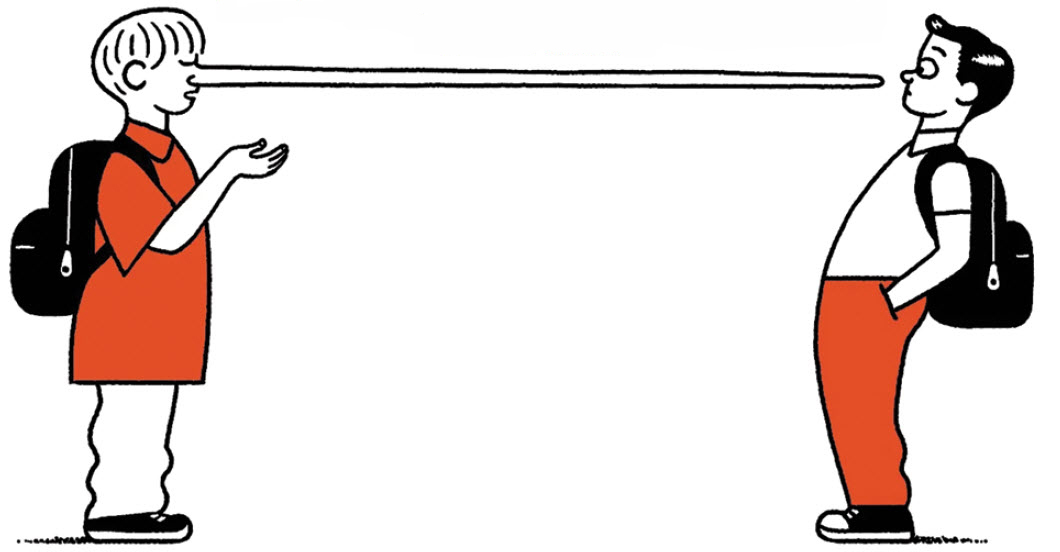Liar! Liar!
 By: Lisa Philippart
By: Lisa Philippart
“The most dangerous liars are those who think they are telling the truth.”
Can you tell when someone is lying? If you do a Google search on how to tell when someone is lying, you’ll find many articles that give you lists with items such as nervousness, voice changes, fidgeting, or averting eye contact. But if you have ever participated in a meeting of any kind, these happen all the time! In fact, these are perfectly normal reactions to a relatively stressful event, like a job interview. And just FYI, about 23% of people admit to lying during an interview.
Spotting a lie can be extremely difficult. We all have our idiosyncrasies when we lie, rather than some set patterns that are constant across all individuals. And often when people are lying, it is likely that some of what they are saying is actually true. It is difficult to sort through the information and figure out what is the deceitful part and what isn’t. For most people (narcissists excluded) lying takes effort because remembering lie upon lie requires tapping in to short- and long-term memory. When people are pushed to explain or clarify lies, they must now either escalate the lies or claim a misunderstanding and explain the truth. Then if they choose to escalate the lie, the indicators that they are lying tend to become more obvious. Knowing what type of lies to look out for can be helpful in spotting these possible untruths.

An error is a lie by mistake. This type of lie is presented by people who believe they are being truthful, but what they are saying is not true. What is said is incorrect, so in this case, the lie is inadvertent. This type of lie represents the most innocent of liars! A lie of omission involves leaving out relevant information. These lies are easy to create and least risky for most people. It doesn’t involve inventing and remembering any stories. It is passive deception, which results in less guilt for the liar. Restructuring a lie is distorting the context of the statements presented. In other words, the person says something (perhaps in sarcasm), changes the characters, or alters the scene. Restructuring can be extremely deceptive as the receiver attempts to figure out which parts of the story are true. Sarcasm employs ambivalence. People often use it to say the opposite of what’s true.

Refusing to acknowledge the truth is a lie of denial. The extent of denial can be quite large. The speaker may be lying only to the receiver, just this one time, or they may be lying to themselves. Minimization is reducing the effects of a mistake, a fault, or a judgement call. It is a type of deception involving denial, coupled with rationalization, in situations where complete denial is implausible. It is the opposite of exaggeration. An exaggeration is a lie presenting something as greater than or better than it really is. People who exaggerate magnify beyond the limits of truth. This is the classic, “I once caught a fish this big!” And finally, fabrication is deliberately inventing a false story. Those who fabricate a story concoct or invent whole or part of a lie, often with the intention to deceive. These people are the ultimate liars…they are lying and they know it.
Now that we have discussed the types of lies to look out for, next time we will identify the categories of liars and learn how to deal with them.
By: Lisa Philipart
Licensed Professional Counselor